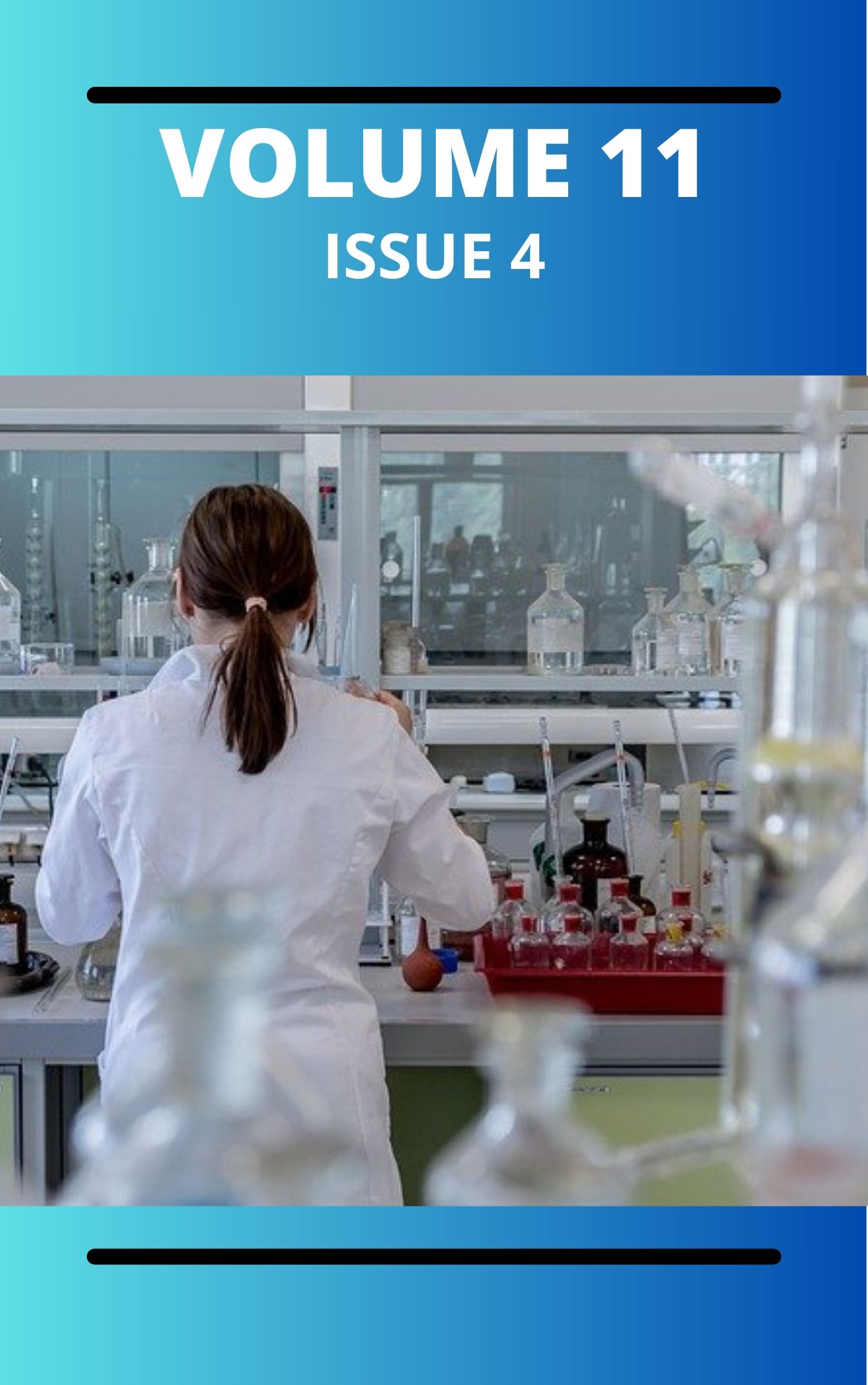Computational Study of the Reaction Mechanism for the Formation of 4,5-Diaminophthalonitrile from 4,5-Dibromo-1,2-Diaminobenzene and Copper Cyanide
DOI:
https://doi.org/10.4314/3fdxhb05Keywords:
Transition state, density functional theory, thermodynamic property, activation barrierAbstract
This study investigates the mechanism of the reaction between 4,5-dibromo-1,2-diaminobenzene and copper cyanide using Density Functional Theory (DFT) calculations. The kinetics and the thermodynamic properties of the reaction were analyzed, revealing two major steps with activated complexes AC1 and AC2. Scheme 3 accurately depicts the reaction pathway. A triangular Cu-C=N moiety was found in the calculated transition states (TS), AC1 and AC2. The thermodynamic parameters for the first step show ΔG = -606.8 kJ mol-1 , ΔH = -610.7 kJ mol-1 and ΔS = -0.0132 kJ mol-1K-1 while for the second step ΔG = -600.1 kJ mol-1, ΔH = -603.6 kJ mol-1, and ΔS = -0.0117 kJ mol-1K-1 were obtained. The activation energies (Ea and Ec) for steps 1 and 2 are 189.0 kJ mol-1 and 210.6 kJ mol-1, respectively. The positive values of and confirm the presence of energy barriers in both steps. These findings provide critical insights into the energetics and mechanism of the DDB reaction with copper cyanide, which is very crucial in understanding the strategy for the development of efficient synthetic procedures for the phthalonitrile.
Downloads
Published
Issue
Section
Similar Articles
- Abdullahi Usman, Ruth O. Onore, Osebuohien A. Oforghor, Jibrin Mohammed, Nasiru L. Usman, Total Phenolic and Flavonoid Contents, Antioxidant Activity and Phytochemical Screening of Calotropis Procera Stem Bark Extracts , Communication In Physical Sciences: Vol. 5 No. 3 (2020): VOLUME 5 ISSUE 3
- Dorathy Edet Etim, Nnamso Effiong Essien, Aniebiet Mmekuwem Essien, Impacts of Acute Toxicity of Heavy Metals (Hg And Pb) On Liver Enzymes of Normal Albino Wistar Rats , Communication In Physical Sciences: Vol. 11 No. 4 (2024): VOLUME 11 ISSUE 4
- Abiodun Rasheed Omokanye, Benefit Onu, Populations of Derived-parasitic Nematodes on Sweet Potato (Ipomoea batatas) Cultivated Fields in Offa, Offa Local Government Area, Kwara State, Nigeria , Communication In Physical Sciences: Vol. 11 No. 2 (2024): VOLUME 11 ISSUE 2
- Bright Adinchezo Adimoha , James Nwawuike Nnadi, Bright Okore Osu, Franca Amaka Nwafor, A Mixed Boundary Value Problem for a Finite Isotropic Wedge Under Antiplane Deformation , Communication In Physical Sciences: Vol. 11 No. 4 (2024): VOLUME 11 ISSUE 4
- Augustine Osondu Friday Ador, Isaac Mashingil Mankili, Franka Amaka Nwafor, Silas Abahia Ihedioha, Bright Okore Osu, Analyzing Market Price Equilibrium Dynamics with Differential Equations: Incorporating Government Intervention and Market Forces , Communication In Physical Sciences: Vol. 11 No. 4 (2024): VOLUME 11 ISSUE 4
- Nnaemeka Emeka Ogbene, Hyacinth Chibueze Inyiama, Frank Ekene Ozioko, Nnamdi Johnson Ezeora, Agbo Chibuike George, Asogwa Tochukwu Chijindu, Application of Green Computing at Nigerian Tertiary Institutions , Communication In Physical Sciences: Vol. 8 No. 4 (2022): VOLUME 8 ISSUE 4
- Njoku, Kevin Ndubuisi Chikezie, Okoli, Odilichukwu Christian., A Note On The Proofs Of Cramer’s Formula , Communication In Physical Sciences: Vol. 11 No. 1 (2024): VOLUME 11 ISSUE 1
- Chinedum Ifeanyi Nwankwo, Onuchi Marygem Mac-Kalunta, Godfrey Ogochukwu Ezema, Nwokedi Anslem Kenecukwu, Uzoefuna Chima Casmir, Ndu Chidiebere Kingsley, Onuoha Peter Chibuzo, In Silico Anti-Inflammatory Activities of Abelmoschus Esculentus Derived Ligands On Cox-2 , Communication In Physical Sciences: Vol. 12 No. 3 (2025): VOLUME 12 ISSUE 3
- Wisdom, Ivwurie, Daniel, Okiriguo, Evaluation of n-Alkanes Hydrocarbon from two Communities in Udu Local Government Area, Delta State , Communication In Physical Sciences: Vol. 7 No. 4 (2021): VOLUME 7 ISSUE 4
- Felicia Uchechukwu Okwunodulu, Stevens Azubuike Odoemelam, Comparative Studies On Infrared Analysis of Some Waste Biomass in Heavy Metals Adsorption , Communication In Physical Sciences: Vol. 8 No. 4 (2022): VOLUME 8 ISSUE 4
You may also start an advanced similarity search for this article.




